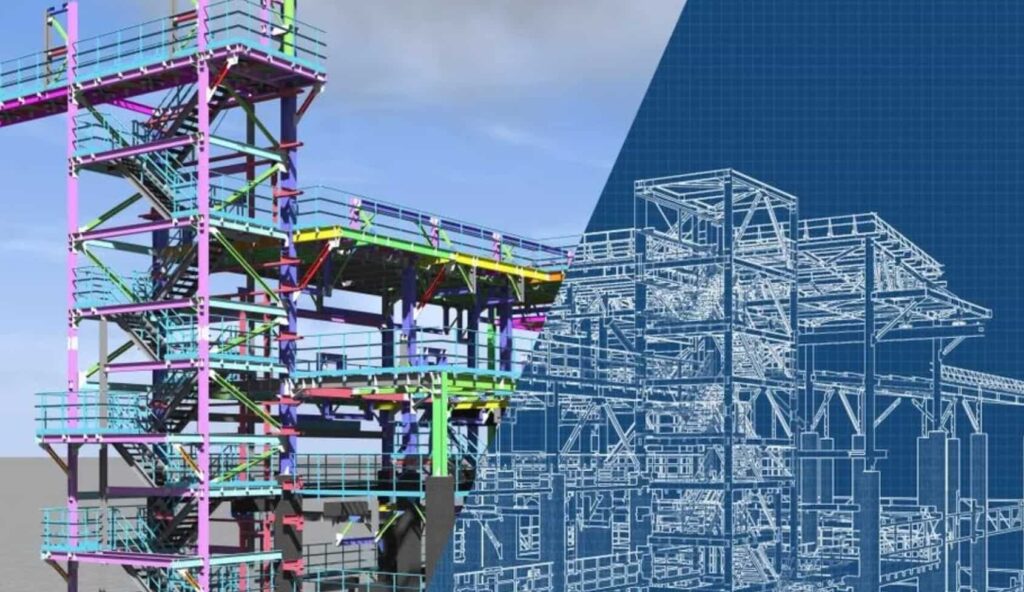The construction industry is shifting with the arrival of Building Information Modeling (BIM). Initially, BIM was thought in the 1970s but later became a core tool only in the 1990s as technology permitted making it more accessible and inexpensive. Today, BIM is at the core of optimizing construction projects by enhancing the cooperation, coordination, and effectiveness of all the teams participating in the projects.
What is BIM?
Therefore, Building Information Modeling (BIM) is a process of developing a 3D model of a building and much more than a 3D model of an asset. This model includes specific information on the design of the building, its construction, and its use and maintenance during its life cycle. A heads-up view of BIM by Bloomberg Business: BIM benefits architects, engineers, project managers, and others involved in construction through improved communication, better decision-making, and a reduction in risks and mistakes typical of the construction industry.
The roles of BIM in the construction industry have transformed into one common platform in which every participant always works with the same updated information. This kind of transparency simplifies the work done in terms of coordination to minimize cost factors such as mistakes and delays. The modern use of BIM in construction can be considered symbiotic, as the technology allows for real-time updates on costs, quantities, and time taken.
Importance of BIM in Construction Projects
- Streamlined Communication: In the past, miscommunication between teams often led to project delays. With BIM, all stakeholders, regardless of their location, can access a centralized platform where all relevant information is stored. This open data-sharing environment eliminates silos, allowing architects, engineers, contractors, and owners to make informed decisions collaboratively.
- Enhanced Efficiency: The use of BIM in construction makes large-scale projects more efficient by speeding up workflows and reducing the project lifecycle. As everything is centralized, design and construction teams can address potential challenges early, reducing the chances of errors or unnecessary rework.
- Risk Management: BIM plays a critical role in identifying hazards before they become issues. Analyzing BIM models for safety risks ensures construction sites remain safe and compliant with regulations, protecting both workers and project timelines.
- Cost Efficiency: The ability to perform in-depth cost analysis early in the planning stages is one of BIM’s greatest strengths. Teams can assess the most cost-effective materials, labor, and logistics options before construction begins. This minimizes waste and avoids the inflated costs of late-stage changes.
- Opportunity for Innovation: Using BIM in construction opens up new opportunities, especially in terms of innovation. With tools like virtual reality, stakeholders can virtually walk through a 3D model of the project before construction starts. This gives everyone involved a chance to make adjustments, identify potential improvements, and optimize the design.
The Role of the Common Data Environment (CDE)
Another important factor that corresponds to the integration of BIM in the construction industry is the creation of a Common Data Environment (CDE). This makes information about the project designs, materials, costs, and schedules easily retrieved from the CDE, hence improving collaboration. Software like Autodesk Revit, Navisworks, and PointFuse assist in building this kind of environment to ensure that all the project members get access to and share crucial information.
How BIM is Changing Construction Management
Through BIM, there is a radical shift from how projects are controlled or coordinated, and what is provided is a real-time view of all the aspects surrounding the construction processes. This research leads to the coordination of BIM and construction since the innovation enhances change communication, risk management, and cost estimation. It does not matter if it is in the design phase or years down the line after the construction of the structure; with BIM, it is possible to access information at any one time.
What is BIM and How Does it Impact the Construction Industry?
The Future of BIM in Construction
People around the world are living more and more in urban environments, and this demand is driving building practices to be more efficient. BIM is already emerging as critical in meeting these needs, whereby project costs have dropped, success rates are high, and innovation is customarily achieved.
It is anticipated that in the following years, there will be a significant increase in taking BIM in the construction industry. This is the future of construction, which indicates that BIM will be even more central in how the construction industry plans, executes and manages structures.
BIM is not a tool. However, it is a continual process that has revolutionized how the world constructs and provides the roadmap towards the future vision of the construction industry.

